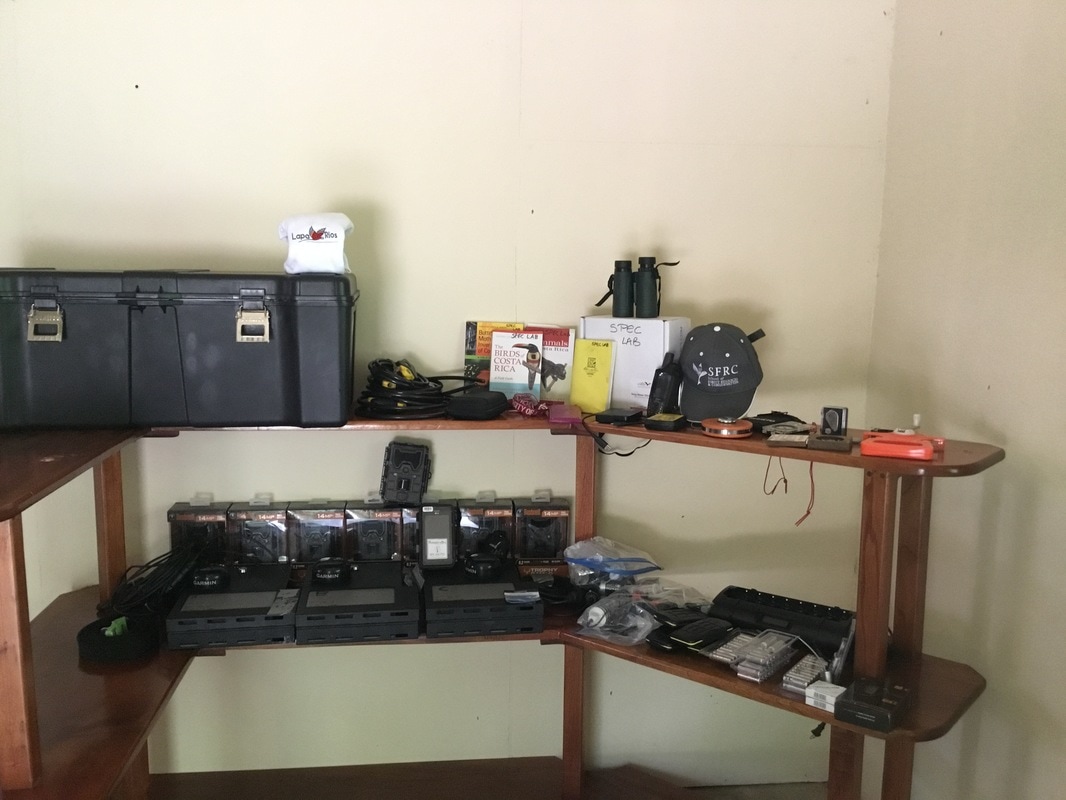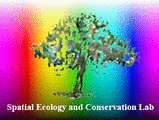|
The story of the Natural Preserve cannot begin without mentioning Karen and John, owners of Lapa Rios Ecolodge. It was back in 1990 when they fell in love and purchase 1000 acres of rainforest with the idea of conservation and community development in mind. Back then, the Osa Peninsula and particularly the areas adjacent to the road were under significant anthropogenic pressures; logging, agriculture and goldmining activities had transformed the land and forest cover was significantly reduced. Through the years, Lapa Rios Ecolodge has carried out an important restoration effort and many of the areas once covered by pasture land have become secondary forest linking clusters and providing vital connectivity with primary forests. These increase in forest cover and connectivity would had undoubtedly resulted in increased biodiversity, particularly in restored areas, and thus the differences between primary and secondary forests would be only related to factors such as species requirements or mobility and that is exactly what I set myself to prove this summer. In order to assess biodiversity differences within the LR Preserve, I have carried out filed surveys using automated systems such as camera traps to evaluate terrestrial mammals (i.e. key predators and their prey) and audio recording systems such as sonic equipment for birds and amphibians and ultrasonic to record bat calls.
It can´t be denied that tropical field work is challenging, adverse climatological conditions, health and safety considerations, human greed “borrowing” some of my equipment, the unstoppable force of nature, animals nesting and using parts of the equipment for their own advantage, but it is all part of the challenge and surely I did not have a bored moment in the field. During these months, 16 species of bats have been identified around LR with Saccopteryx bilineata and Myotis nigricans being the most detected species and an excess of 500 hours of sonic and ultrasonic audio have also been recorded from the different forest ecosystems and are now ready to be analysed. In addition, more than 7000 camera trap pictures have been collected including 4 out of the 5 species of Felines comprised the Peninsula, two species of peccaries, tayras, racoons, armadillos, anteaters, and many, many, many agouties, not camera shy with hundreds of pictures featuring this amazing rodent and its foraging behaviour. A Jaguar and White-lipped peccaries were only detected in primary forests, in contrast a Margay, certainly an elusive cat due to its arboreal requirements, was captured in a secondary forest very close to the road. A small canopy pilot study has been also carried out in collaboration with primatologist Dr. Kim Dingess working with Danta: Association for Conservation of the Tropics and Agustin Mendoza, one of the best climbers of the area whose local botanical knowledge never cease to amaze me! Two canopy cameras have been also installed within the Preserve to evaluate the arboreal diversity, seasonality and connectivity of Ficus insipida trees within different types of secondary forests: 1) close to the road and surrounded by regenerated secondary forest, and 2) deep within the Preserve (i.e. far from anthropogenic disturbance) and adjacent to pristine primary forest (i.e. transition from primary to secondary). Would the canopy cameras have resisted the rainy conditions of the Osa Forests? Would it be any differences between the arboreal diversity within both sites? Stay tune for more, results are coming up soon!
2 Comments
Working with people is about one of my favourite things to do and luckily for me, environmental education and citizen science are a very important component of my PhD! Every week at Lapa Rios Ecolodge we celebrate Wednesday Science, an opportunity for guests, staff members, and the local community to learn more about my project, the scientific method, the species of the Peninsula, their ecology and threats, but above else to think about conservation and the implications that an individual can have for conservation.
So What Happen on Wednesdays? In the morning, I work with the local school founded by Lapa Rios and a very important institution here in Matapalo. The idea is not only to learn, is to have a direct impact on my project contributing with the knowledge of the Osa, hands on work, just how I like it! Building rain proof covers made of recycled plastic to protect the camera traps or designing and creating the butterfly traps that I will be using in the dry season are some of the workshops prepared for this summer. Children are indeed the future and Carbon era represent all sectors of the Costa Rican society, Ticos, expats, and indigenous children united in this wonderful school in the middle of the rain forest. The perfect setting if you ask me! During the afternoon, Lapa Rios guests are invited to learn and collaborate with the camera trap program and data management. After a brief training where guest learn to identify and recognise most of the terrestrial species recorded on camera, they help generating data from the pictures: date, time, trail, specie´s name and number or gender are some of the information we use to develop the Lapa Rios database. This time is also used to talk to staff members and get them involved in the project and enhance their knowledge on the species of the Osa Peninsula. These guys are always available, each break from work is a good excuse for them to help and learning about sound scaping one of their favourite things to do! In the evening, Lapa Rios guest and guides join with bat point counts around the Ecolodge as part of their night walk, one of the most liked and enjoyed tours in Lapa Rios. Unfortunately, these are easier said than done, stormy nights and limitations with H&S and the equipment have resulted in only a few of these surveys to be completed. In spite of those limitations, the Echo Bat Meter from Wildlife Acoustics makes the delights of all guest discovering the different bat species and learning about bat calls and echolocation. In addition to Wednesday Science, every Sunday evening I present the scientific research happening right here in Lapa Rios Natural Preserve and weekly updates from all sides of this holistic approach where forest, animals and humans are linked using cutting edge technology!!
|
|

